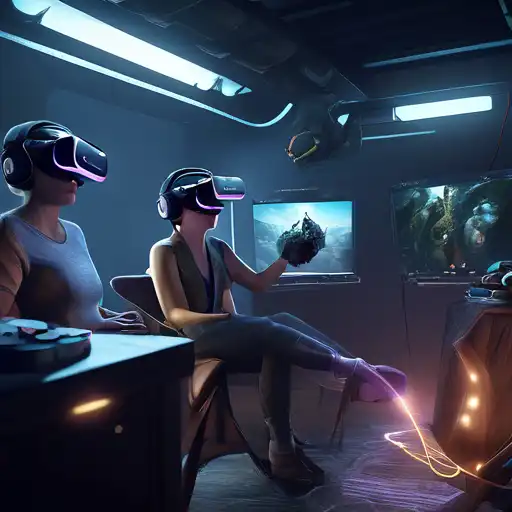Introduction to Virtual Reality
Virtual Reality (VR) has transformed the way we interact with digital content, offering unparalleled immersive experiences. From gaming to education, VR's applications are vast and varied. This guide will walk you through the essentials of creating immersive VR experiences that captivate and engage.
Understanding VR Technology
Before diving into VR development, it's crucial to understand the technology behind it. VR relies on headsets, motion tracking, and immersive audio to create a sense of presence in a virtual world. Familiarizing yourself with these components is the first step toward crafting compelling VR content.
Designing for Immersion
Immersion is the cornerstone of any successful VR experience. To achieve this, focus on creating detailed environments, realistic interactions, and a seamless user interface. Remember, the goal is to make users forget they're in a virtual world.
Key Elements of Immersive Design
- High-quality 3D models and textures
- Realistic physics and interactions
- Dynamic lighting and shadows
- Immersive audio design
Choosing the Right Development Tools
Selecting the appropriate tools is critical for VR development. Popular engines like Unity and Unreal Engine offer robust support for VR, providing developers with the resources needed to bring their visions to life.
Optimizing Performance
VR applications demand high performance to maintain immersion. Optimizing your project involves reducing polygon counts, optimizing textures, and ensuring smooth frame rates. Performance bottlenecks can quickly break immersion, so this step cannot be overlooked.
Testing and Iteration
Testing is an ongoing process in VR development. Gather feedback from users to identify areas for improvement. Iteration based on real user experiences is key to refining your VR project.
Publishing Your VR Experience
Once your VR experience is polished, it's time to share it with the world. Platforms like SteamVR, Oculus Store, and Viveport offer avenues for distribution. Consider your target audience and choose the platform that best suits your project.
Conclusion
Creating immersive VR experiences is a challenging yet rewarding endeavor. By understanding the technology, focusing on immersive design, and leveraging the right tools, you can craft experiences that transport users to new worlds. Remember, the key to success lies in attention to detail and continuous improvement.
